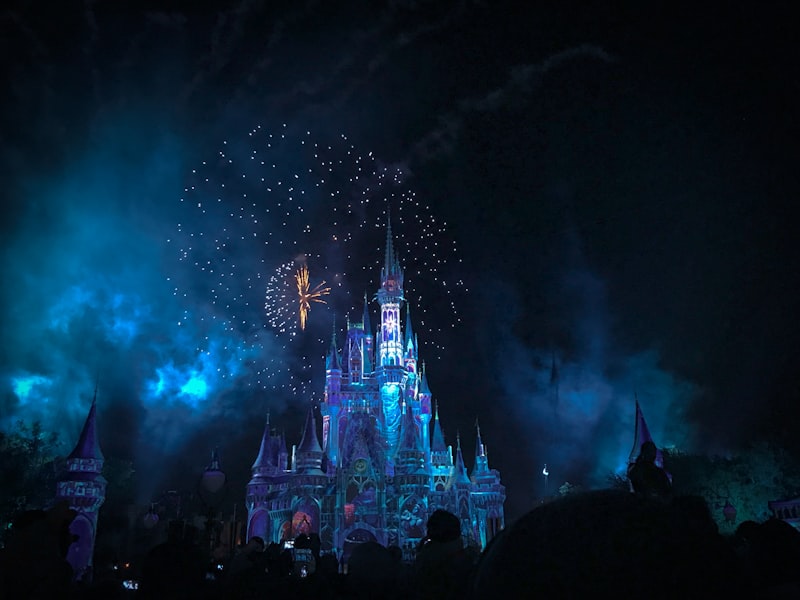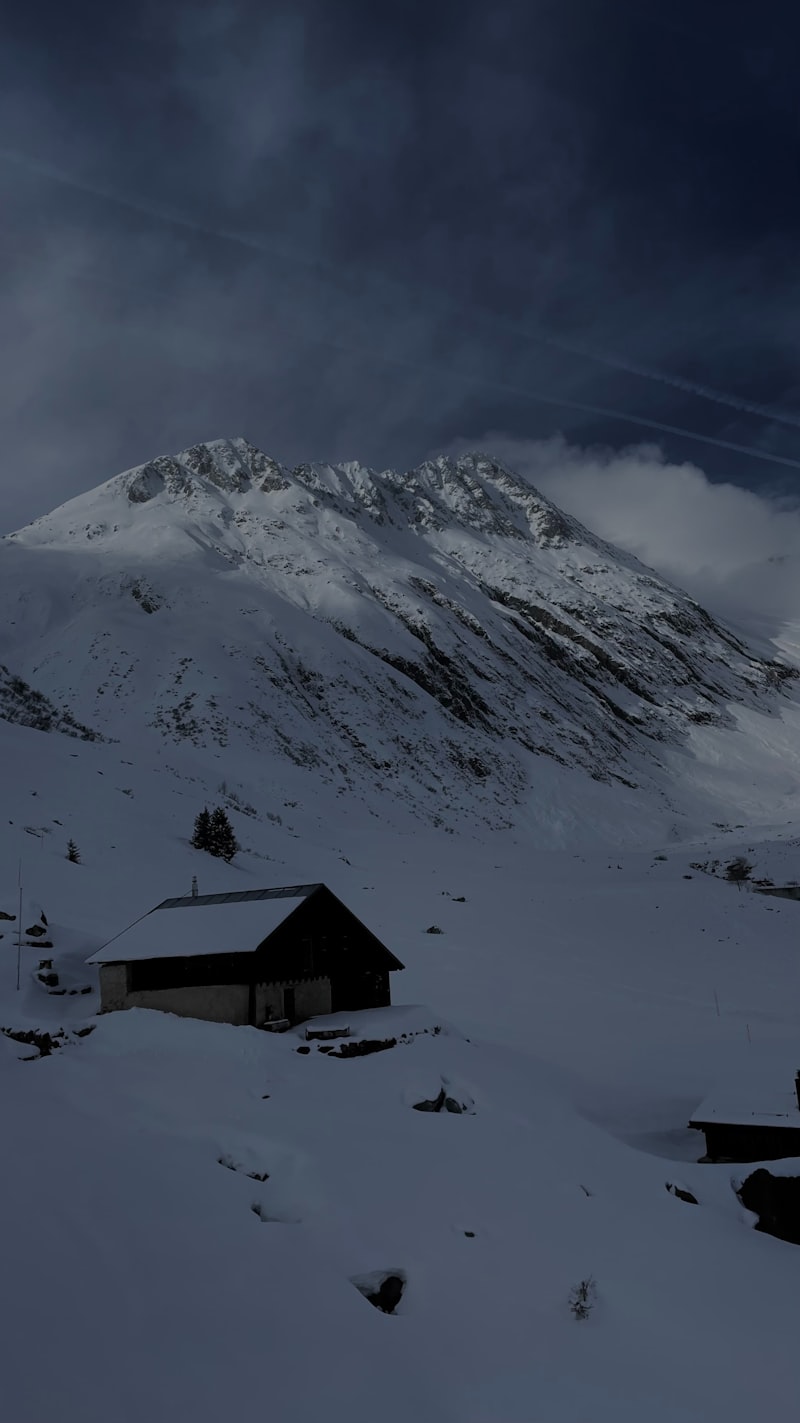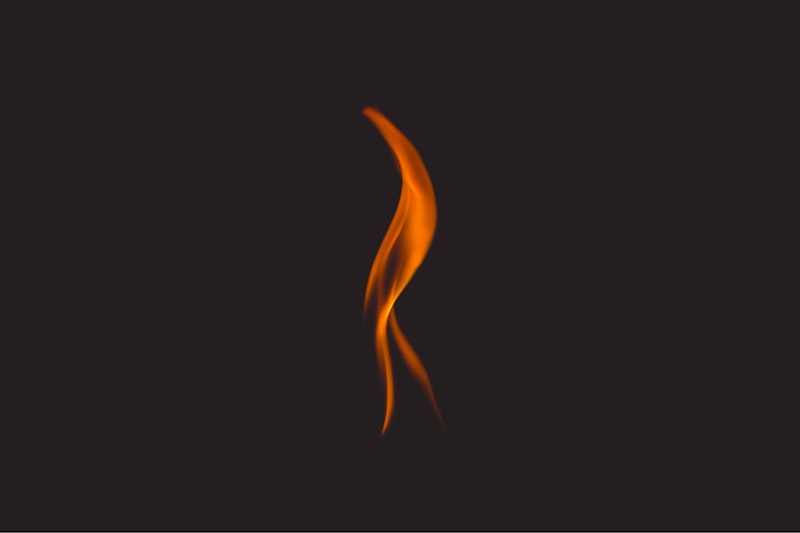Ever wondered what makes classic horror literature so spine-chilling? One of the key ingredients that authors often rely on is the use of supernatural elements. These elements aren’t just spooky additions; they’re crucial for creating an atmosphere of fear and suspense that keeps readers on the edge of their seats.
In many classic horror stories, supernatural elements serve as the catalyst for the plot. Whether it’s a haunted house, a malevolent ghost, or a cursed object, these supernatural entities drive the narrative forward by instilling fear and uncertainty in the characters and, by extension, in the readers.
Take Edgar Allan Poe’s ‘The Tell-Tale Heart’ for example. The supernatural element here isn’t a traditional ghost or monster but rather the protagonist’s guilty conscience manifesting itself in the form of a relentless heartbeat. This element serves to heighten the tension and psychological horror of the story, leaving readers questioning the boundaries between reality and madness.
Moreover, supernatural elements often act as metaphors or symbols in classic horror literature. They can represent repressed fears, societal anxieties, or moral dilemmas. Consider Mary Shelley’s ‘Frankenstein,’ where Victor Frankenstein’s creation of a living being from dead tissue challenges notions of life and death, morality, and the consequences of playing God.
Furthermore, these supernatural elements tap into universal fears and archetypes that resonate across cultures and time periods. Whether it’s Bram Stoker’s ‘Dracula’ with its immortal vampire or H.P. Lovecraft’s cosmic horrors that defy comprehension, these creatures embody fears of the unknown and the uncontrollable, making them enduring symbols of terror.
Supernatural elements in classic horror literature serve a multitude of purposes. They drive the plot, evoke deep-seated fears, and provoke existential questions. By harnessing the power of the supernatural, authors craft tales that linger in our minds long after we’ve turned the final page.
Unveiling the Haunting Influence: How Supernatural Elements Shape Classic Horror Stories
Classic horror stories have a timeless allure that keeps us coming back, craving the spine-chilling thrill of supernatural encounters. What is it about these tales that captivates our imagination and sends shivers down our spines? It’s the seamless integration of supernatural elements that adds an eerie, almost palpable dimension to the narrative.
Imagine walking through a dimly lit corridor where shadows seem to have a life of their own. This is the essence of supernatural horror—a realm where ghosts linger, unseen forces move objects, and eerie whispers echo in the silence. These elements inject an unsettling uncertainty into the storyline, blurring the line between what’s real and what’s beyond our comprehension.

Take, for instance, the classic tale of Dracula. Bram Stoker masterfully weaves supernatural elements throughout the story, from the vampire’s ability to shape-shift into a bat to his immortal existence fueled by the blood of the living. These supernatural traits not only heighten the fear factor but also serve as metaphors for deeper human fears—fear of mortality, of the unknown, and of losing control.
Moreover, supernatural elements often act as catalysts for psychological exploration. In Henry James’ “The Turn of the Screw,” the presence of ghostly apparitions serves as a mirror to the protagonist’s inner turmoil and descent into madness. This psychological layer adds complexity, inviting readers to delve deeper into the darker corners of human consciousness.
What makes these stories truly haunting is their ability to tap into universal fears and anxieties. The supernatural is a canvas onto which authors paint our deepest fears—fear of the dark, of death, of malevolent entities that defy natural laws. By embodying these fears in supernatural beings or events, authors create narratives that resonate on a primal level, lingering in our thoughts long after we’ve closed the book.
From Dracula to Poe: Supernatural Themes That Defined Classic Horror Literature

Imagine stepping into the shoes of Jonathan Harker, greeted by the enigmatic Count Dracula amidst the Carpathian Mountains. Bram Stoker’s immortal tale not only introduced the world to the iconic vampire but also delved deep into themes of eternal life and the seductive allure of the unknown. Dracula’s castle, with its looming shadows and secret passages, symbolizes the darkness within us all, a place where fear and desire intertwine.
In stark contrast, Edgar Allan Poe’s macabre tales transport us to the fog-bound streets of 19th-century America. From the haunting beat of the tell-tale heart to the spectral raven that perches upon the chamber door, Poe’s mastery lies in his ability to evoke primal fears through poetic prose. His works embody the psychological terror that lurks in the human psyche, exploring themes of guilt, madness, and the inevitability of death.
What makes these tales endure across centuries? Perhaps it’s their ability to tap into universal fears and desires — the fear of the unknown, the allure of immortality, and the fragility of sanity. Like a specter in the night, classic horror literature continues to beckon readers into the shadows, challenging them to confront their deepest fears.
As we navigate through the haunted corridors of Stoker’s Dracula and Poe’s bleak landscapes, one thing becomes clear: these stories are not mere tales of terror, but timeless reflections of the human condition. They remind us that even in the face of darkness, there is beauty in the macabre, and truth in the shadows.
So, dare to explore the supernatural realms of classic horror literature, where every creaking floorboard and whispered echo holds a secret waiting to be uncovered. Let the legacy of Dracula and Poe guide you through the labyrinth of the human soul, where fear and fascination converge in tales that continue to cast their spell over generations.
Ghosts, Ghouls, and Gothic: Exploring the Supernatural in Vintage Horror Tales
Imagine stepping into a decrepit mansion, its walls echoing with the whispers of restless spirits. Every creak of the floorboards sends a shiver down your spine, as if unseen eyes are watching from the shadows. These tales weave a tapestry of fear and fascination, drawing us into realms where the boundaries between the living and the dead blur with unsettling ease.
What makes vintage horror unique is its ability to tap into primal fears. It delves into the unknown, where the supernatural roams freely, challenging our perception of reality. The ghosts that haunt these stories are not merely phantoms; they are manifestations of our deepest anxieties, reflections of unresolved pasts or cautionary tales of what lies beyond.
In Gothic literature, the setting itself becomes a character, steeped in foreboding atmosphere. Dilapidated castles, fog-shrouded moors, and labyrinthine corridors create a sense of entrapment, heightening the sense of impending doom. These dark landscapes mirror the inner turmoil of the characters, amplifying their fears and desires.
Moreover, vintage horror tales often employ metaphors and allegories to explore societal anxieties and taboos. They serve as mirrors to our own fears of mortality, the unknown, and the consequences of tampering with forces beyond our control. Through these stories, we confront our deepest fears in a safe space, finding catharsis in the thrill of the supernatural.
Ultimately, vintage horror tales endure because they speak to something primal within us—the fear of the unknown and the allure of the forbidden. They invite us to explore the darker corners of our imagination, where ghosts, ghouls, and the Gothic merge into a haunting symphony of suspense and intrigue.
Eerie Echoes: Why Supernatural Elements Remain Timeless in Horror Classics
Have you ever wondered why supernatural elements continue to chill and thrill audiences in classic horror films and literature? Dive into any horror masterpiece, from Mary Shelley’s “Frankenstein” to contemporary films like “The Conjuring,” and you’ll find that supernatural forces play a pivotal role in shaping the spine-tingling narrative.
Supernatural elements possess a unique allure that transcends time and cultural boundaries. They tap into our deepest fears and primal instincts, evoking a sense of dread and fascination simultaneously. Whether it’s malevolent spirits haunting old mansions or vengeful ghosts seeking retribution, these elements create an atmosphere of suspense and uncertainty that keeps audiences on the edge of their seats.
What makes supernatural entities so compelling? Unlike human villains whose motives are often grounded in reality, supernatural beings operate by their own mysterious rules. They defy logic and challenge our understanding of the natural world, adding an extra layer of unpredictability to the narrative. This unpredictability heightens suspense and amplifies the fear factor, making every encounter with the supernatural a heart-pounding experience.
Moreover, supernatural elements often serve as metaphors for deeper societal anxieties and existential dilemmas. They reflect our fears of the unknown, the afterlife, and the boundaries between life and death. By confronting these fears through supernatural storytelling, creators provoke introspection and contemplation among audiences, transforming fear into a thought-provoking exploration of human nature and the mysteries of existence.
In addition to their thematic richness, supernatural elements offer endless creative possibilities for storytelling. Writers and filmmakers can invent new creatures, haunted locations, and paranormal phenomena, providing fresh and innovative scares with each iteration. This flexibility allows the genre to evolve while maintaining its core elements of fear and suspense, ensuring that supernatural horror remains relevant and impactful across generations.
Ultimately, the timeless appeal of supernatural elements in horror classics lies in their ability to evoke primal emotions, provoke deep reflection, and offer limitless avenues for storytelling. As long as audiences crave the thrill of the unknown and the adrenaline rush of facing fears beyond comprehension, supernatural horror will continue to captivate and terrify with its eerie echoes through the ages.
The Macabre Touch: Supernatural Symbolism in Classic Horror Novels
Imagine stepping into the shadowy world of Edgar Allan Poe’s “The Tell-Tale Heart,” where a haunting heartbeat exposes the guilt-ridden mind of a murderer. Poe’s mastery lies in his ability to intertwine supernatural elements with the raw emotions of his characters, creating an atmosphere thick with dread and suspense. Each thump of the heart echoes the protagonist’s descent into madness, leaving readers on the edge of their seats.

In Shirley Jackson’s “The Haunting of Hill House,” the titular mansion becomes a character itself, its malevolent presence shaping the psychological horrors faced by its inhabitants. Jackson employs supernatural symbolism to blur the lines between reality and the paranormal, challenging readers to confront their deepest fears lurking within the walls of the house.
H.P. Lovecraft’s cosmic horror tales, such as “The Call of Cthulhu,” transport readers to otherworldly dimensions where ancient entities and forbidden knowledge threaten human sanity. Lovecraft’s intricate mythos of Elder Gods and cosmic terror taps into primal fears of the unknown, painting a universe where humanity is but a speck amidst unfathomable horrors.
Through these classic horror novels, authors use supernatural symbolism like a painter’s brush, creating landscapes of fear and wonder in the minds of readers. The symbolism of vampires, ghosts, and monstrous creations serves not only to terrify but also to explore profound themes of mortality, morality, and the human condition itself.
Beyond the Grave: How Supernatural Entities Drive Fear in Classic Literature
Ghosts, perhaps the most iconic of supernatural beings, haunt the pages of literature with their ethereal forms and unresolved grievances. They embody the lingering echoes of past tragedies, manifesting in creaking floorboards and flickering candlelight, evoking a sense of unease that taps into our primal fear of the unknown.
Demons, on the other hand, embody malevolent forces that threaten to corrupt and destroy. From Faustian bargains to infernal possessions, these entities symbolize the darker aspects of human nature and the consequences of unchecked ambition. Their presence in literature serves as a cautionary tale, warning against the perils of temptation and moral decay.
Beyond mere specters and fiends, supernatural entities in classic literature often serve as allegories for deeper existential fears. They represent the inevitability of death, the fragility of sanity, and the boundaries between the natural and supernatural realms. By confronting these fears through storytelling, authors provoke introspection and contemplation in their readers, challenging them to confront their own beliefs and anxieties.
Moreover, the allure of supernatural entities lies in their ability to defy rational explanation. They exist beyond the grasp of science and logic, shrouded in mystery and ambiguity. This ambiguity allows authors to explore themes of uncertainty and existential dread, inviting readers to question the nature of reality itself.
Supernatural entities in classic literature serve as potent symbols of fear and fascination. Whether they appear as vengeful spirits, diabolical entities, or enigmatic forces beyond comprehension, their presence enriches narratives with suspense, symbolism, and philosophical depth. Through their portrayal, authors illuminate the darkest corners of the human psyche, leaving an indelible mark on readers who dare to peer ‘Beyond the Grave’.
The Art of Fear: Supernatural Devices and Their Psychological Impact
Picture this: you’re sitting alone in a dimly lit room, reading a ghost story. The air feels thick with anticipation as the narrative unfolds, each page unraveling mysteries that send shivers down your spine. What makes these tales so gripping? It’s not just the eerie settings or ghostly apparitions; it’s the artful use of supernatural devices that heightens our senses and taps into our deepest fears.
Take, for instance, the classic haunted house scenario. This trope has been a staple in supernatural fiction for centuries, from Edgar Allan Poe to modern horror films. The creaking floorboards, flickering lights, and inexplicable sounds evoke a primal fear of the unknown. They mirror our own anxieties about what lies beyond our senses, amplifying our sense of vulnerability.
Or consider the cursed object—a seemingly ordinary item imbued with dark forces. Think of a cursed doll that seems to move on its own or a cursed painting that brings misfortune to its owners. These objects blur the line between reality and superstition, playing on our fear of malevolent forces we cannot control.

Then there’s the spectral apparition—the ghostly figure that appears at the edge of vision, fleeting yet unforgettable. Whether it’s a vengeful spirit seeking justice or a lost soul searching for closure, ghosts tap into our fear of the supernatural and the unresolved mysteries of life and death.
But why do we seek out these tales of terror? Perhaps it’s because they offer a safe way to confront our deepest fears. By experiencing fear in a controlled environment, we can explore the darker corners of our imagination without real danger. It’s a cathartic experience that leaves us with a sense of awe and wonder, marveling at the artistry behind crafting such spine-chilling tales.
Frequently Asked Questions
How do authors use supernatural elements to explore human fears in classic horror texts?
Explore how authors employ supernatural elements in classic horror texts to delve into human fears. Discover the ways in which these elements amplify suspense and evoke primal emotions, offering profound insights into our deepest anxieties and the darker aspects of the human psyche.
How do supernatural elements enhance suspense in classic horror stories?
Discover how supernatural elements intensify suspense in classic horror tales with this concise FAQ. Learn how ghosts, eerie settings, and unexplained phenomena create tension and fear, heightening the narrative’s chilling impact.
Why are supernatural beings significant in Gothic horror novels?
Discover why supernatural beings play a crucial role in Gothic horror novels, influencing atmosphere, suspense, and themes such as the unknown and fear of the supernatural. Their presence intensifies the eerie and mysterious elements central to the genre, enhancing the storytelling with supernatural phenomena and unsettling encounters.
What are supernatural elements in classic horror literature?
Discover the supernatural elements that define classic horror literature, including ghosts, vampires, and supernatural occurrences. Explore how these elements create suspense and fear, often challenging the boundaries of reality and exploring themes of the unknown and the macabre.
What are examples of iconic supernatural entities in classic horror literature?
Explore iconic supernatural entities in classic horror literature with examples like Dracula, Frankenstein’s monster, and the Phantom of the Opera. Discover how these timeless characters have influenced the genre and captivated audiences with their eerie presence and enduring narratives.


